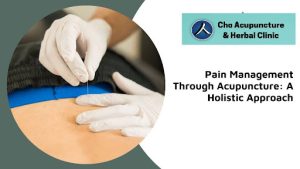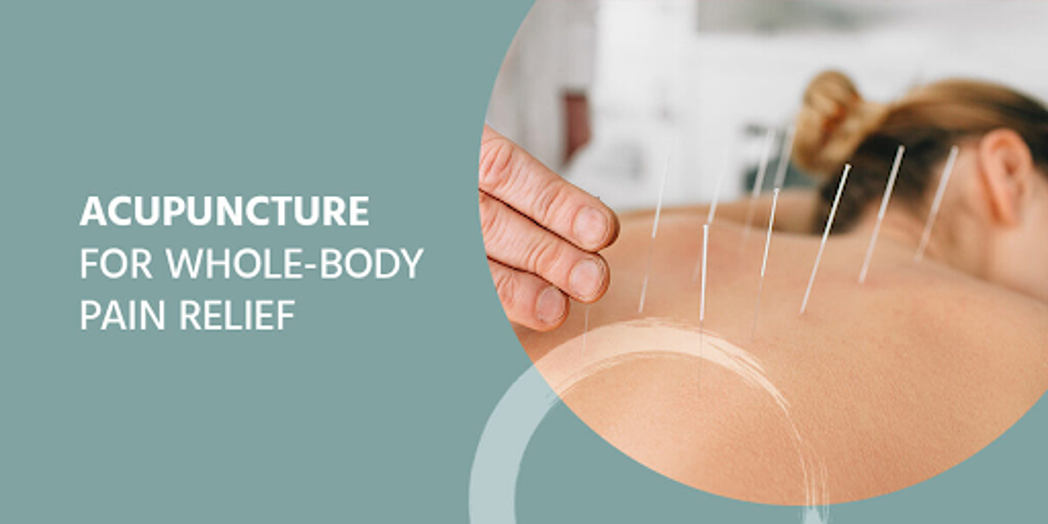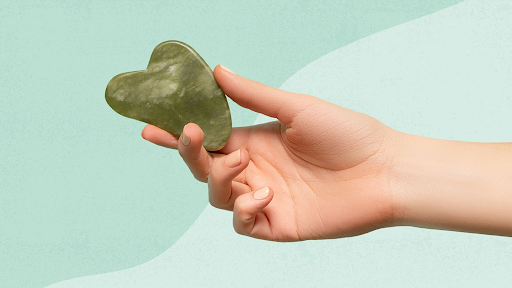Acupuncture for Pain Relief: What the Research Says

Acupuncture Therapy: How It Works, Benefits, and Risks
October 4, 2024
Exploring Traditional Chinese Medicine: Acupuncture, Cupping, and Gua Sha
November 14, 2024Chronic pain affects millions worldwide, significantly impacting quality of life. Cho Acupuncture & Herbal Clinic offers an effective solution with acupuncture services, providing a non-invasive and drug-free alternative to pain relief. Acupuncture, rooted in Traditional Chinese Medicine (TCM), stimulates specific points on the body to promote healing and alleviate discomfort.
If you’re seeking holistic therapies for chronic pain, Cho Acupuncture has established itself as a reputable clinic offering various acupuncture treatments. Recent research supports the benefits of acupuncture for chronic pain management, making it an attractive option for those seeking relief without drugs.
This ancient practice, rooted in Traditional Chinese Medicine (TCM), involves stimulating specific points on the body to promote healing and alleviate discomfort.
Recent acupuncture research highlights its potential benefits in chronic pain management, making it an attractive option for those seeking holistic therapies.
This article delves into the scientific evidence supporting acupuncture for chronic pain relief and explores its various therapeutic mechanisms.
Understanding Acupuncture as a Pain Relief Method
What is Acupuncture and Where Does It Come From?
Acupuncture is a therapeutic technique rooted in Traditional Chinese Medicine (TCM), an ancient healing system that dates back over 2,500 years. TCM revolves around the concept of Qi (pronounced “chee”), the vital life force that flows through pathways in the body known as meridians. At Cho Acupuncture & Herbal Clinic, we focus on restoring this balance using acupuncture as part of our holistic pain management strategy. You can explore more about these approaches in our detailed services section.
How Does Acupuncture Work?
Acupuncture therapy for pain involves the strategic placement of needles at specific points on the body, known as acupoints. These acupoints are believed to correspond to different organs and functions within the body. By stimulating these points, acupuncture seeks to:
- Restore Qi Flow: Unblock and balance the flow of Qi throughout the meridians.
- Promote Natural Healing: Encourage the body’s innate healing processes.
To better understand how this works, you can read more about our customized acupuncture services here.
In practical terms, when an acupuncturist inserts needles into these acupoints, several physiological responses occur:
- Nerve Stimulation: The insertion of needles triggers sensory nerves under the skin and in muscles.
- Central Nervous System Activation: This stimulation sends signals to the brain and spinal cord, which can lead to various biological changes.
The Role of Endorphins and Serotonin in Promoting Healing
Research has shown that one of the key mechanisms behind how acupuncture works involves the release of endorphins and serotonin, which play crucial roles in pain relief and mood regulation.
- Endorphins: Often referred to as the body’s natural painkillers, endorphins are neurotransmitters that inhibit pain signals in the brain. Their release during acupuncture can significantly reduce pain perception.
“Many studies indicate that acupuncture induces endogenous opioid release which is associated with analgesic effects,” says Dr. Zhang from The Journal of Pain.
- Serotonin: Known for its role in mood stabilization, serotonin also influences pain perception. Increased serotonin levels can enhance feelings of well-being and reduce discomfort.
These biochemical changes contribute to acupuncture’s effectiveness as a non-invasive, drug-free option for managing chronic pain.
Understanding how acupuncture interacts with bodily systems lays a foundation for exploring its broader effects on pain pathways and overall health.
How Acupuncture Affects Pain Pathways

Understanding the science behind acupuncture reveals its profound impact on the nervous system, making it a pivotal method for pain relief.
Physiological Mechanisms of Acupuncture
Acupuncture stimulates the nervous system by inserting fine needles into specific points on the body. These points lie along pathways known as meridians, which are believed to facilitate the flow of Qi or life energy. Modern science associates these meridians with networks of nerves, muscles, and connective tissue. When needles are inserted:
- Nerve Stimulation: The insertion activates sensory nerves that send signals to the brain and spinal cord.
- Endorphin Release: This stimulation leads to the release of endorphins, which are natural pain-killing chemicals produced by the body.
- Neurotransmitter Modulation: Acupuncture influences neurotransmitters like serotonin and dopamine that play crucial roles in mood regulation and pain perception.
Neurotransmitters and Pain Relief
The release of neurotransmitters is central to acupuncture’s effectiveness in alleviating pain. Endorphins act as natural analgesics, reducing pain perception. Serotonin contributes by enhancing mood and overall well-being, while dopamine impacts both rewards and pain suppression mechanisms. These changes create a multifaceted approach to managing chronic pain.
Scientific Studies on Pain Pathways and Brain Activity
Several studies demonstrate how acupuncture affects pain pathways and brain activity:
- Functional MRI (fMRI) Scans: Research using fMRI scans shows that acupuncture can alter brain activity in regions associated with pain processing. For instance, decreased activity is observed in areas like the thalamus and limbic system.
- Electroacupuncture Studies: Combining traditional acupuncture with electrical stimulation has shown enhanced effects on peripheral nerve function and increased blood flow to affected tissues.
A study published in The Journal of Pain highlighted that patients receiving acupuncture reported significant reductions in chronic pain compared to control groups. This validates acupuncture’s role as a credible method for altering physiological processes related to pain.
The interconnectedness of these physiological mechanisms underscores why acupuncture remains a highly effective treatment option for chronic pain management.
Clinical Evidence Supporting Acupuncture for Pain Relief

Key Studies on Acupuncture’s Efficacy
Research on acupuncture effectiveness has significantly advanced, providing substantial evidence supporting its role in pain management. A notable study published in Archives of Internal Medicine involved over 18,000 patients suffering from chronic pain conditions such as osteoarthritis, migraines, and chronic back pain. This extensive research concluded that acupuncture is effective in managing these types of pain, demonstrating a measurable difference compared to no-acupuncture controls.Our services page further explains how we integrate these findings into our therapies.
Another critical study conducted by the Journal of Pain focused on low back pain, a prevalent condition affecting millions globally. The randomized controlled trial involved 638 patients who received either true acupuncture or sham acupuncture. Results revealed that those receiving true acupuncture experienced significant pain relief and functional improvement compared to the sham group.
In the case of fibromyalgia, a meta-analysis published in Pain Medicine reviewed data from multiple studies involving approximately 1,200 patients. The analysis found that acupuncture provided significant relief from fibromyalgia symptoms, including widespread musculoskeletal pain and fatigue. These findings suggest that traditional treatments can be effectively supplemented with acupuncture for enhanced patient outcomes.
Meta-Analysis Findings
Meta-analyses provide a comprehensive view by combining data from multiple studies to assess overall trends and effectiveness. A prominent meta-analysis featured in the Journal of Pain evaluated the effects of acupuncture on various chronic pain conditions. This analysis reviewed data from 29 high-quality randomized controlled trials involving nearly 18,000 participants.
Key findings included:
- Low Back Pain: Patients receiving acupuncture reported greater pain relief and improved function compared to those receiving no treatment or standard medical care.
- Osteoarthritis: Acupuncture was shown to reduce pain and improve joint function in patients with osteoarthritis, particularly of the knee.
- Migraines and Tension Headaches: Regular acupuncture sessions led to a reduction in the frequency and severity of headaches.
Insights from Reputable Journals
The British Medical Journal (BMJ) also published an influential paper examining the role of acupuncture in treating chronic non-specific low back pain. This study demonstrated that acupuncture not only provided better outcomes than usual care but also had long-lasting effects on pain reduction and quality of life improvement.
Additionally, a systematic review published in Cochrane Database of Systematic Reviews highlighted acupuncture’s effectiveness for chronic tension-type headaches. The review included 12 trials with over 2,300 participants and concluded that acupuncture significantly reduced headache frequency compared to standard pharmacological treatments.
These key studies and meta-analyses collectively underscore the importance of considering acupuncture as a viable option for chronic pain management. Such consistent evidence across various reputable journals supports its integration into mainstream medical practices for enhanced patient care solutions.
Comparing Acupuncture with Other Treatments for Chronic Pain Management
When evaluating various treatments for chronic pain, acupuncture often stands out due to its holistic approach and low risk of side effects. Let’s delve into how acupuncture compares to other common treatments such as sham acupuncture and nonsteroidal anti-inflammatory drugs (NSAIDs).
Effectiveness Compared to Sham Acupuncture
Sham acupuncture, which involves using non-penetrative needles or stimulating non-acupuncture points, serves as a placebo control in clinical trials. Studies have shown that while both real and sham acupuncture can provide pain relief, real acupuncture tends to produce more significant and sustained benefits. For example:
- A study published in Archives of Internal Medicine indicated that patients receiving real acupuncture experienced greater pain reduction compared to those undergoing sham acupuncture.
- Research in the Journal of Pain also demonstrated that real acupuncture resulted in better outcomes for chronic pain conditions like osteoarthritis and migraines.
These findings suggest that the specific techniques and points targeted in real acupuncture contribute substantially to its effectiveness.
Comparison with NSAIDs
Nonsteroidal anti-inflammatory drugs (NSAIDs) such as ibuprofen are commonly prescribed for chronic pain management. While they can be effective, their use comes with potential risks including gastrointestinal issues, cardiovascular problems, and kidney damage. In comparison:
- Safety Profile: Acupuncture has a lower risk profile, with common side effects limited to mild bruising or soreness at needle sites.
- Long-Term Benefits: Studies show that regular acupuncture sessions can lead to long-term improvements in pain management without the dependency or tolerance issues associated with NSAIDs.
A comparative study highlighted in The BMJ found that while both treatments were effective for conditions like lower back pain, patients undergoing acupuncture reported fewer adverse effects.
Health Organization Recommendations
Leading health organizations recognize the benefits of acupuncture for chronic pain:
- The American College of Physicians recommends acupuncture as a first-line treatment for acute and chronic lower back pain.
- The National Institutes of Health (NIH) acknowledges the efficacy of acupuncture for various pain conditions, emphasizing its role in comprehensive pain management strategies.
These endorsements underscore the growing acceptance of acupuncture within conventional medical frameworks, advocating it as a viable alternative or complement to traditional pharmacological treatments.
Types of Acupuncture Techniques Used in Pain Relief Therapy
Acupuncture encompasses a variety of techniques, each with distinct characteristics and benefits. Understanding these differences can help patients choose the most appropriate method for their needs.
Japanese Acupuncture
Japanese acupuncture is known for its gentle approach. Practitioners use finer needles and shallower insertions compared to traditional Chinese acupuncture. This technique focuses on palpation, which means the acupuncturist will use touch to find the most effective points for needle insertion. Benefits include:
- Minimized discomfort: Ideal for those who are needle-sensitive.
- Precision: Enhanced by tactile feedback from the practitioner.
- Holistic treatment: Often combined with moxibustion and other therapies.
Korean Acupuncture
Korean acupuncture, also known as Saam acupuncture, emphasizes balancing the body’s energy (Qi) through specific meridian points. This style often involves:
- Four-needle technique: Two needles to tonify or strengthen deficient energy and two to sedate or reduce excessive energy.
- Focus on hands and feet: Critical areas believed to reflect the entire body’s health.
- Herbal medicine integration: Frequently combined with personalized herbal prescriptions.
Complementary Therapies
In addition to needle-based methods, several complementary therapies enhance the effectiveness of acupuncture:
Moxibustion
Moxibustion involves burning mugwort herb (moxa) near or on acupuncture points. The heat generated helps stimulate these points and improve circulation. Known benefits include:
- Enhanced blood flow: Heat increases local blood circulation.
- Pain relief: Effective in treating musculoskeletal issues.
- Immune boost: Believed to strengthen the body’s defense mechanisms.
Cupping
Cupping therapy uses special cups placed on the skin to create suction. This method offers several advantages:
- Muscle relaxation: Effective for relieving tension and tightness.
- Detoxification: Helps draw out toxins from deep tissues.
- Improved circulation: Promotes better blood flow, aiding in pain relief.
Other Techniques
Beyond these primary methods, some clinics like Cho Acupuncture & Herbal Clinic incorporate advanced techniques:
- Electro-Acupuncture: Combines traditional needle insertion with electrical stimulation, enhancing pain relief and tissue healing.
- Guasha: Involves scraping the skin with a smooth-edged tool to improve circulation and relieve muscle tension.
These diverse techniques offer various pathways to pain relief, catering to different patient needs and conditions. By understanding these methods, patients can make informed decisions about their treatment plans.
Personalization in Acupuncture Treatment Plans for Optimal Results

Importance of Working with a Licensed Acupuncturist
When considering acupuncture for pain relief, selecting a licensed acupuncturist is crucial. These professionals are trained to create customized treatment plans tailored to each individual’s unique condition and needs. A licensed acupuncturist possesses the requisite knowledge and skills to accurately diagnose and treat various ailments, ensuring safe and effective therapy.
Key reasons to choose a licensed acupuncturist:
- Expertise: Rigorous training and certification ensure high standards of practice.
- Safety: Use of sterile needles and adherence to strict hygiene protocols minimize risks.
- Personalization: Ability to tailor treatments based on comprehensive patient assessments.
Una Cho’s Approach at Cho Acupuncture & Herbal Clinic
At Cho Acupuncture & Herbal Clinic, Una Cho exemplifies the importance of individualized care. Her approach integrates traditional techniques with modern understandings of health, focusing on individual patient needs.
Unique strategies employed by Una Cho:
- Comprehensive Assessments: Utilizing pulse diagnosis and detailed patient histories to inform treatment plans.
- Holistic Care: Combining acupuncture with complementary therapies such as herbal medicine, moxibustion, and cupping.
- Patient-Centered Techniques: Ensuring comfort through gentle needle insertion methods suitable for all comfort levels.
By working closely with her patients, Una crafts customized treatment plans that address the root causes of pain and promote overall well-being. This personalized approach not only enhances the effectiveness of acupuncture but also fosters a deeper connection between practitioner and patient, paving the way for long-term health benefits.
In essence, choosing a licensed acupuncturist like Una Cho can significantly impact the success of acupuncture therapy, transforming it into a powerful tool for chronic pain management.
Safety Considerations When Choosing Acupuncture for Pain Relief
Ensuring safety is a top priority at Cho Acupuncture. We use sterile needles and adhere to the highest standards of care to minimize any risks. For more on how we ensure safe and effective treatment, visit our services.
Safety Measures During Treatments
- Sterile Needles: The use of sterile, single-use needles is crucial in preventing infections and ensuring patient safety.
- Proper Protocols: Adherence to strict protocols regarding needle insertion, depth, and site selection helps prevent complications such as bruising or minor bleeding.
- Clean Environment: Treatment rooms should be clean and sanitized regularly.
Importance of Choosing a Certified Acupuncturist
- Professional Certification: Selecting a certified acupuncturist ensures they have undergone rigorous training and adhere to professional standards.
- Experience Matters: An experienced acupuncturist is more likely to accurately diagnose conditions and apply effective treatment techniques.
Additional Safety Considerations
- Initial Consultation: A comprehensive initial consultation is vital. This includes discussing medical history, current medications, and any existing health conditions that might affect treatment.
- Patient Education: Educating patients about what to expect during acupuncture sessions can alleviate anxiety and build trust.
- Emergency Protocols: Clinics should have clear emergency protocols in place. While serious complications are rare, being prepared enhances patient confidence in the safety of acupuncture therapy.
By prioritizing these safety measures, patients can experience the benefits of acupuncture with minimal risk. Ensuring that you choose a well-trained, certified practitioner is essential for receiving safe and effective treatment.
Potential Risks and Side Effects Associated with Acupuncture Therapy for Chronic Pain Management
As with any medical treatment, acupuncture comes with its share of potential risks and side effects. However, it is generally considered safe when performed by a trained and certified practitioner.
Common Side Effects:
- Temporary Soreness: Patients may experience mild soreness at the needle insertion points. This discomfort typically resolves within 24 to 48 hours.
- Bruising: Minor bruising can occur around the needle sites. This is usually harmless and subsides quickly.
- Fatigue: Some individuals may feel tired or lethargic after a session, which can be a sign that the body is responding to the treatment.
Guidance for Initial Consultations:
When embarking on acupuncture therapy for chronic pain management, an initial consultation sets the foundation for effective treatment. Here’s what to expect:
- Medical History Review: The acupuncturist will take a detailed medical history, asking questions about your current health issues, past medical conditions, medications, and lifestyle habits.
- Treatment Goals: Discussing your treatment goals helps tailor the acupuncture sessions to address specific pain relief needs and overall health improvement.
- Physical Examination: Some practitioners might conduct a physical examination, including checking your pulse or examining areas of pain.
- Personalized Treatment Plan: Based on your medical history and consultation discussions, a personalized treatment plan will be developed to optimize outcomes.
Ensuring Safe Practices:
To minimize complications from acupuncture treatments, it’s essential to choose a certified acupuncturist who adheres to safety protocols such as:
- Using sterile, single-use needles
- Maintaining clean and hygienic treatment environments
- Following proper needle insertion techniques
By being well-informed about what to expect and choosing a reputable practitioner, patients can experience the benefits of acupuncture while minimizing potential risks.
Frequently Asked Questions





